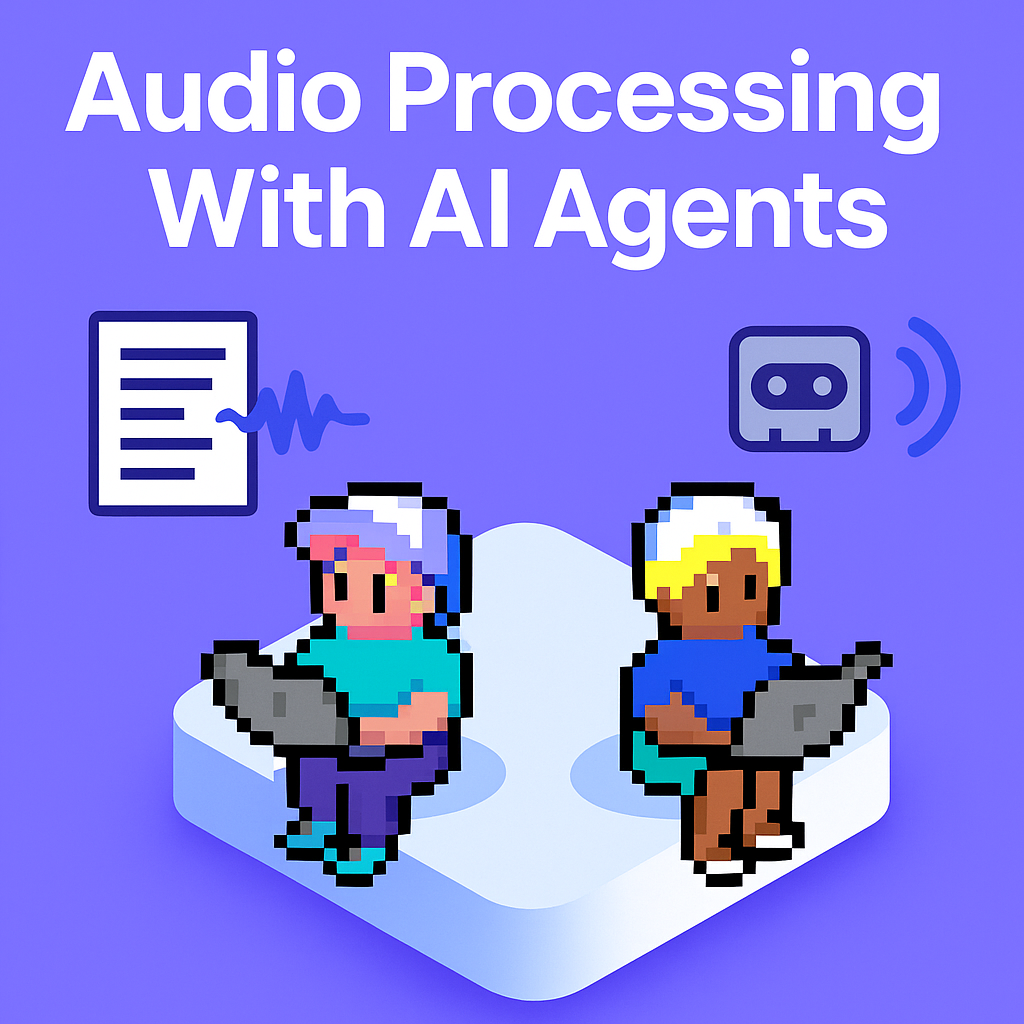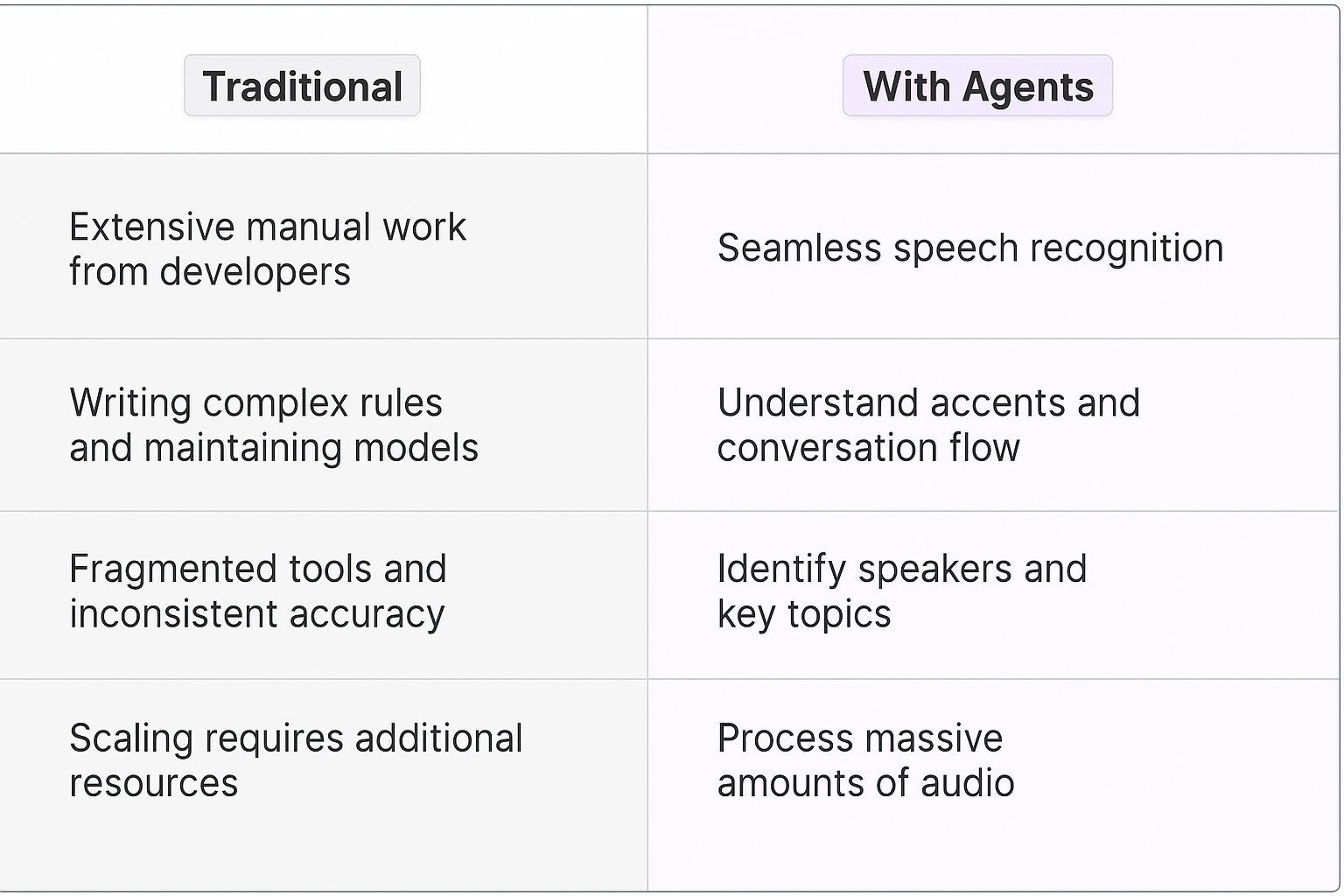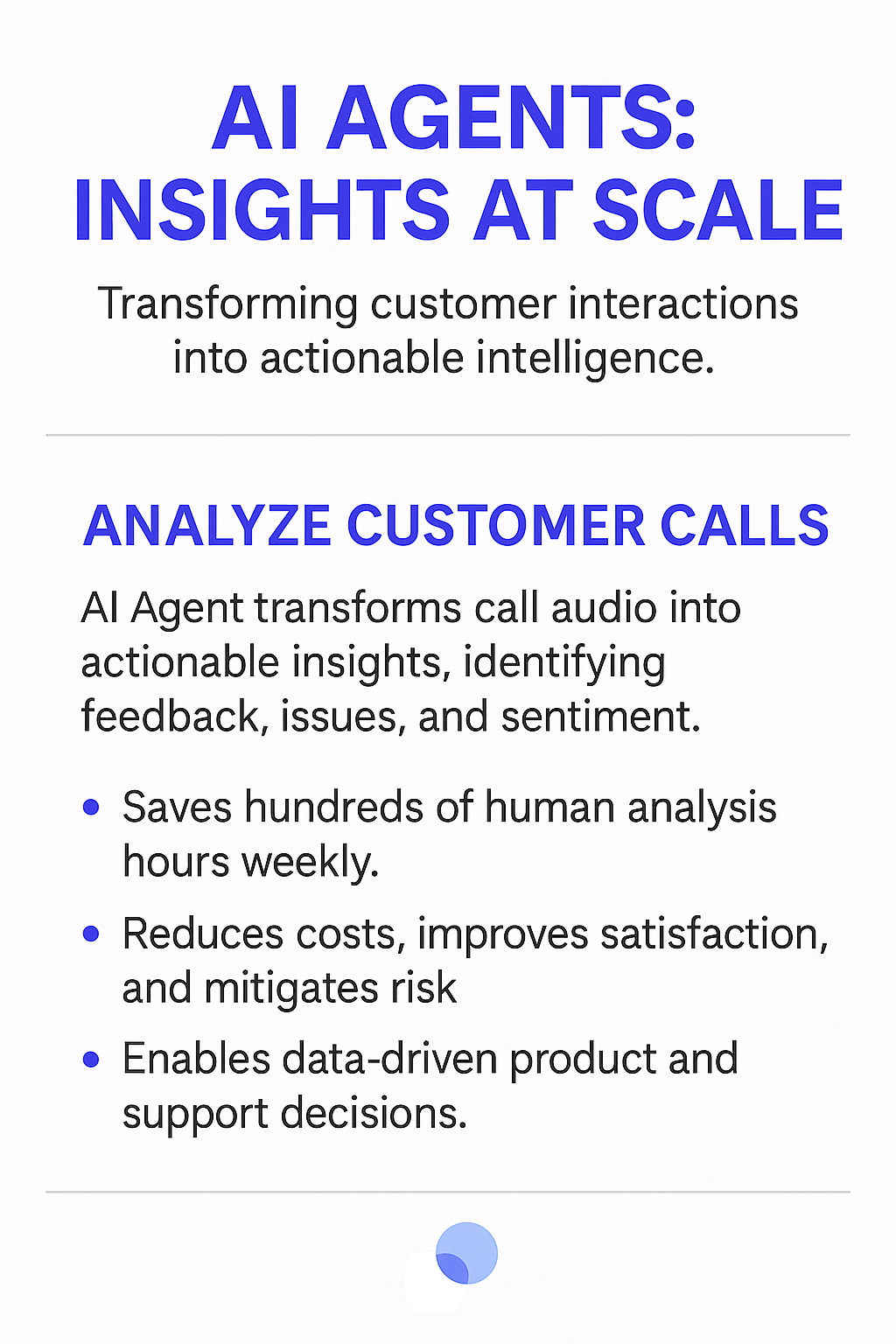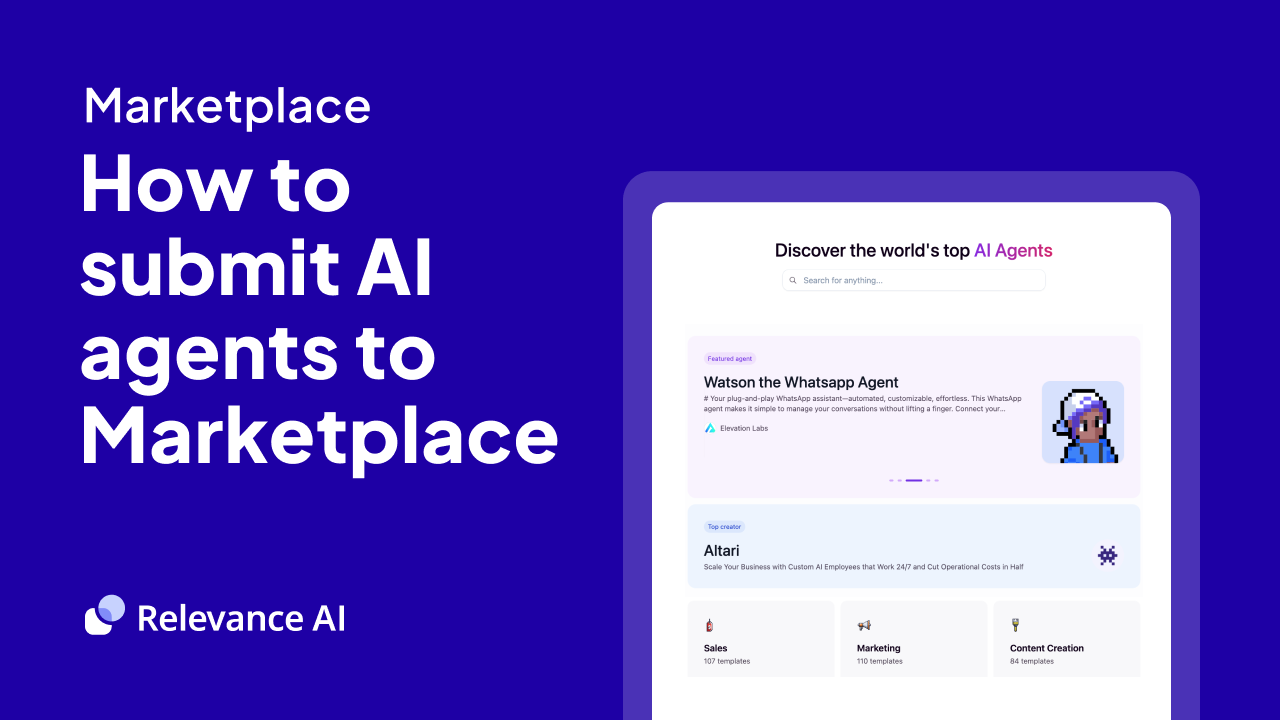Assembly AI
Understanding Assembly AI's Speech Recognition Platform
What is Assembly AI?
Assembly AI delivers state-of-the-art speech recognition technology powered by advanced neural networks. The platform processes audio content with remarkable accuracy, extracting meaningful insights through speaker identification, sentiment analysis, and topic detection. Unlike traditional speech-to-text solutions, Assembly AI's architecture enables deep understanding of conversational context and nuanced speech patterns.
Key Features of Assembly AI
The platform stands out through its core capabilities:
- Real-time transcription with adaptive noise filtering
- Multi-speaker detection and voice separation
- Semantic understanding and topic classification
- Sentiment analysis and emotion detection
- Custom vocabulary training for industry-specific terminology
- Scalable API infrastructure for enterprise deployment

Benefits of AI Agents for Assembly AI
What would have been used before AI Agents?
Speech recognition and audio processing traditionally required extensive manual work from developers. Teams would spend countless hours writing complex rules, handling edge cases, and maintaining speech recognition models. The process was fragmented - developers juggled multiple tools and services while dealing with inconsistent accuracy across different audio sources and languages.
What are the benefits of AI Agents?
AI Agents transform speech recognition from a resource-intensive challenge into a seamless capability. The key benefits include:
- Adaptive Learning: Unlike static speech recognition systems, AI Agents continuously improve their understanding of different accents, speaking styles, and industry terminology. This creates a compounding advantage - the more the system is used, the more accurate it becomes.
- Context-Aware Processing: AI Agents understand the nuances of conversation flow and speaker intent. They can distinguish between multiple speakers, identify key topics, and extract meaningful insights from natural dialogue.
- Scale Without Complexity: Development teams can process thousands of hours of audio without expanding their infrastructure or engineering resources. The AI Agents handle the heavy lifting of audio processing while maintaining consistent quality.
- Real-Time Adaptability: The system adjusts processing parameters based on audio quality, background noise, and speaking patterns. This dynamic optimization ensures high accuracy across diverse real-world conditions.
- Integration Intelligence: AI Agents seamlessly connect with existing workflows and tools. They understand how to route processed audio and extracted insights to the right places, reducing manual handoffs and potential bottlenecks.
This shift represents a fundamental evolution in speech recognition technology. Rather than wrestling with complex implementations, teams can focus on building features that directly impact their users while the AI Agents handle the intricate details of audio processing.
Potential Use Cases of AI Agents with AssemblyAI
Processes
AssemblyAI's speech recognition capabilities enable powerful automated workflows that transform audio content into actionable data. Organizations can deploy AI agents to continuously monitor customer service calls, extracting key insights about product feedback, common issues, and customer sentiment. These digital teammates process hours of audio content in minutes, identifying patterns that would take human teams weeks to uncover.
Sales teams gain a competitive edge by having AI agents analyze their call recordings to identify successful conversation patterns, objection handling techniques, and closing strategies. The AI automatically categorizes different parts of sales conversations, creating a searchable knowledge base of winning tactics.
Tasks
Content creators and media companies leverage AssemblyAI agents to automatically generate accurate transcripts and summaries of podcasts, interviews, and video content. The AI handles speaker diarization, identifying who said what throughout lengthy recordings. This enables rapid content repurposing and distribution across multiple channels.
Legal and compliance teams deploy AI agents to monitor recorded meetings and calls for specific keywords, phrases, or topics that may pose regulatory risks. The AI flags potential issues in real-time, allowing for swift intervention when needed.
Market researchers use AI agents to analyze focus group recordings and customer interviews at scale. The AI extracts key themes, sentiment, and verbatim quotes, providing rich qualitative insights without manual transcription and coding. This accelerates the research process while maintaining accuracy.
Healthcare providers implement AI agents to automatically document patient interactions, creating detailed notes from recorded conversations. The AI captures symptoms, treatments discussed, and follow-up items, reducing administrative burden while ensuring thorough documentation.
Educational institutions utilize AI agents to make lectures and course content more accessible. The AI generates accurate transcripts and translations, enabling students to engage with materials in their preferred format and language.

Industry Use Cases
AssemblyAI's speech recognition and audio analysis capabilities open up transformative possibilities across multiple sectors. The technology's ability to convert spoken words into actionable data creates opportunities that were previously out of reach for many organizations. Drawing from real-world implementations, these industry applications demonstrate how AI-powered audio processing drives meaningful business outcomes.
What makes AssemblyAI particularly compelling is its ability to handle complex audio environments and extract nuanced insights at scale. From healthcare providers documenting patient interactions to media companies processing thousands of hours of content, the applications extend far beyond basic transcription. The technology's deep learning models can identify speakers, analyze sentiment, and extract key topics - creating rich, structured data from raw audio.
Rather than just automating existing processes, AssemblyAI enables entirely new workflows and use cases. Organizations can now analyze customer conversations at scale, generate searchable archives of multimedia content, and derive actionable intelligence from audio data that was previously locked away in recordings. This fundamental shift in audio processing capability is driving adoption across industries with distinct needs and compliance requirements.
Media Companies Transform Content Creation with AssemblyAI
Media organizations face mounting pressure to maximize their content's reach and accessibility while maintaining tight production schedules. AssemblyAI's speech recognition capabilities create a powerful multiplier effect for content teams.
Take a mid-sized podcast network producing 15 shows weekly. Their production team previously spent 4-6 hours manually transcribing each hour-long episode. With AssemblyAI integrated into their workflow, those transcripts now generate automatically with 95%+ accuracy. But the real value emerges in how teams leverage this capability:
Content teams extract key quotes and insights within minutes of recording, rapidly repurposing segments for social media. SEO specialists optimize show notes and website content using the full searchable transcript. Producers identify recurring themes across episodes to inform future content planning.
The network effect compounds as more shows adopt the technology. Writers cross-reference transcripts to find relevant clips from past episodes. Marketing creates highlight reels by quickly scanning dialogue. Accessibility improves as deaf and hard-of-hearing audiences engage through accurate captions.
The key insight is that AssemblyAI doesn't just save time - it fundamentally changes how media teams work with audio content. When transcription shifts from a bottleneck to an automated process, teams discover new ways to extract value from their content archives. This creates a virtuous cycle where better content insights lead to stronger audience engagement.
For media companies seeking product-market fit, this capability to rapidly iterate and optimize content based on data represents a significant competitive advantage. The winners in digital media will be those who best harness AI to amplify their creative output while maintaining authentic connections with audiences.
Education Institutions Scale Learning with AI-Powered Transcription
The shift to hybrid learning environments has exposed major gaps in how educational institutions capture and distribute knowledge. Leading universities and online learning platforms are deploying AssemblyAI to transform how students engage with lecture content.
A large public university system implemented AssemblyAI across 200+ lecture halls and virtual classrooms. The impact extends far beyond basic transcription. Students now search across entire semester's worth of lectures to find specific concepts. International students reference transcripts to reinforce understanding. Faculty identify which topics generate the most student questions and discussion.
The data reveals fascinating patterns in learning engagement. Professors spot which explanations resonate versus which need refinement. Teaching assistants proactively reach out when transcript analysis shows students struggling with particular concepts. The institution gains unprecedented insight into teaching effectiveness across departments.
But the most profound impact comes from how this shapes student behavior. Rather than frantically taking notes, students fully engage in classroom discussion. They annotate transcripts during review sessions, creating rich study guides that combine lecture content with their own insights. Study groups collaborate more effectively by referencing specific moments from past lectures.
The network effects grow stronger each semester as the transcript database expands. New students benefit from searching previous years' explanations of complex topics. Curriculum planning improves through analysis of historical learning patterns. Faculty share and build upon successful teaching approaches identified through transcript analysis.
This represents a fundamental evolution in how institutions approach knowledge capture and distribution. When every lecture becomes searchable data, education transforms from a linear experience into an interconnected knowledge network. The universities that thrive will be those that leverage AI-Powered Transcription to amplify human teaching while creating more personalized learning pathways.

Considerations and Challenges
Implementing Assembly AI agents requires careful planning and strategic consideration across multiple dimensions. Organizations need to evaluate their technical infrastructure, data governance policies, and team readiness before deployment.
Technical Challenges
The integration complexity of Assembly AI agents often exceeds initial expectations. Teams must address API rate limiting, manage authentication protocols, and ensure robust error handling. Speech-to-text processing demands significant computational resources, especially for real-time transcription needs.
Data pipeline architecture becomes critical when processing large volumes of audio content. Organizations need to implement efficient storage solutions and caching mechanisms to maintain performance. Network latency and bandwidth constraints can impact transcription accuracy and response times.
Operational Challenges
Training teams to effectively utilize Assembly AI capabilities requires dedicated resources and time. Organizations must develop clear protocols for handling sensitive audio data and establish guidelines for content moderation.
Cost management emerges as a key consideration, particularly when scaling operations. Usage patterns need careful monitoring to prevent unexpected expenses. Teams should implement usage quotas and alerts to maintain budget control.
Integration Considerations
Existing workflows may require significant modifications to accommodate Assembly AI's capabilities. Teams need to evaluate current systems for compatibility and plan for potential disruptions during implementation.
API versioning and documentation changes demand ongoing attention. Organizations should establish a change management process to stay current with Assembly AI's evolving features while maintaining system stability.
Security and Compliance
Audio data processing raises specific privacy concerns. Teams must implement robust encryption protocols and access controls. Compliance with industry regulations like GDPR and HIPAA requires careful consideration of data handling practices.
Regular security audits become essential to protect sensitive information. Organizations should develop incident response plans specifically for audio data breaches.
Strategic Impact of AI-Powered Audio Processing
Assembly AI represents a fundamental shift in how organizations process and derive value from audio content. The technology's impact extends beyond mere automation - it creates new possibilities for content creation, learning, and business intelligence. While implementation challenges exist around technical integration, data governance, and compliance, organizations that successfully deploy Assembly AI gain significant competitive advantages through enhanced audio processing capabilities. The platform's continuous learning approach ensures growing value over time, making it a strategic asset for forward-thinking organizations.











